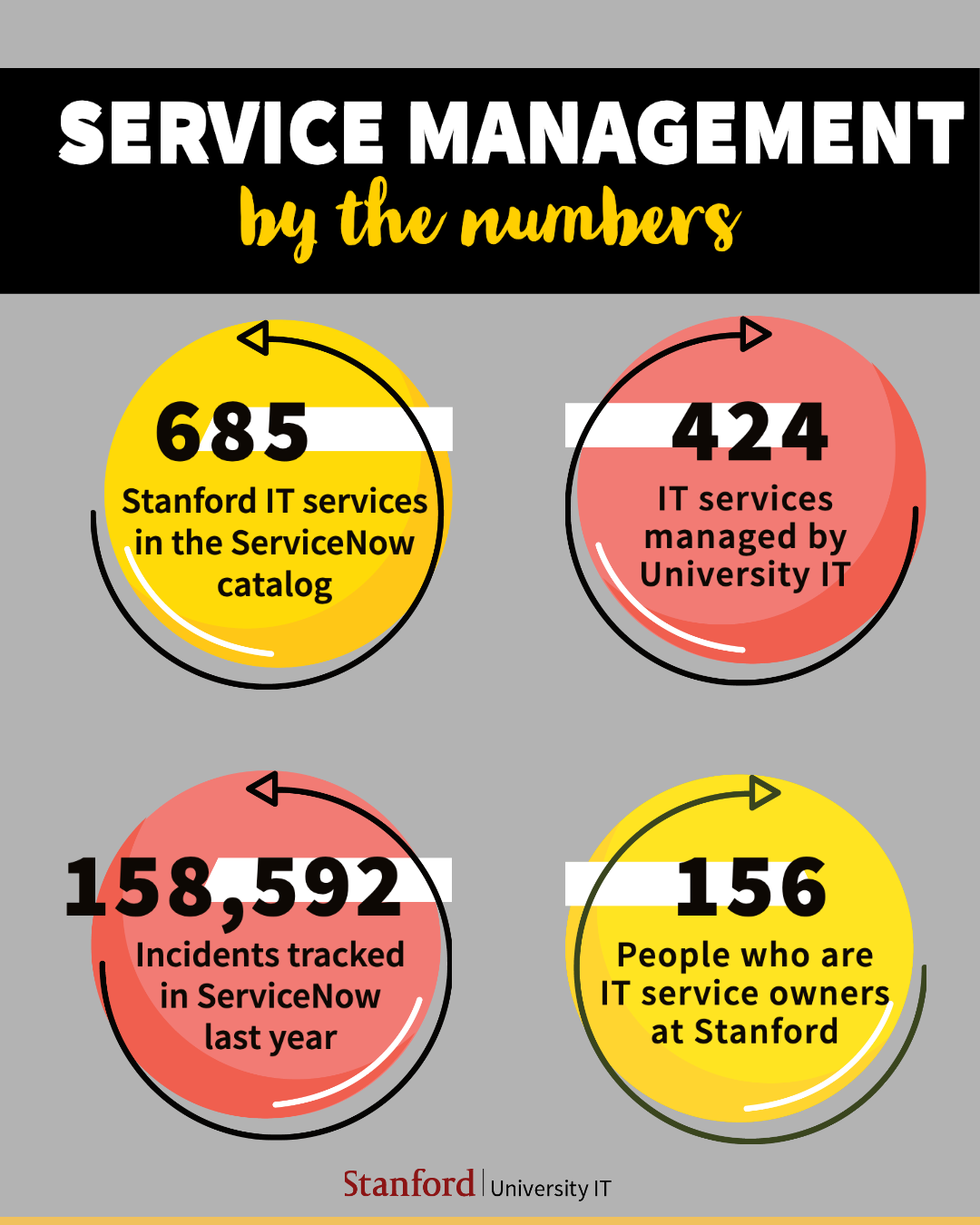
Service Management by the numbers look
685 Stanford IT in the ServiceNow catalog
424 IT services managed by University IT
158,592 Incidents tracked in ServiceNow last year
156 People who are service owners at Stanford
Welcome to the Service Management blog – a new source for updates and articles about the art and science of managing your IT service. Be sure to check back each month for new content, tips, and information.
What is modern IT service management?
Are you wondering what IT service management is all about? In essence, it’s a mix of the people, processes, and information that help us design, plan, deliver, operate, and control the services offered. IT service management at Stanford helps to ensure that each IT service delivers the desired results and provides a good experience for those who use it.
Who should read the blog?
Are you preparing to offer a new IT service? Or maybe managing, changing, or retiring an existing service? If so, you’ve come to the right place. We’ll offer actionable information and best practices from experts within University IT (UIT) to help you manage the life cycle of your IT Service.
Developing an understanding of basic service management principles will help you to launch production-ready IT services. You’ll also have a framework for managing and improving your service, and for retiring it when the time comes.
Not yet a service manager? While the blog may be particularly relevant for staff involved in the management of a service, those with a general interest in the subject may also find the information useful and interesting.
What you’ll find
We’ll explore many IT service management topics over the coming months, including how to:
- develop support processes that minimize service incidents (and thereby increase client satisfaction and reduce service costs)
- develop a service rate, or work with a vendor to get the best possible rates and terms
- improve your service with service metrics
- identify when it is time to retire your service
- learn how we use ServiceNow to manage services
While we hope you find the blog useful, there’s no reason to wait for the monthly article. To support you in the management of your services, we’ve also developed the Service Management Toolkit that includes numerous how-tos, templates, and a wealth of resource documents. You can visit this robust resource at your convenience.
Service delivery across the Stanford footprint
Many IT services are available to the Stanford community. And while the majority of those services are managed by UIT, about one-third are managed by other university business partners. To provide a consistent experience, all IT service owners now use a tool called ServiceNow to track requests for support, report incidents, and store knowledge articles.
Are you curious about how many IT services are currently offered across the Stanford footprint? Taking a peek into ServiceNow data gives us some insight as shown in the infographic on the right.



